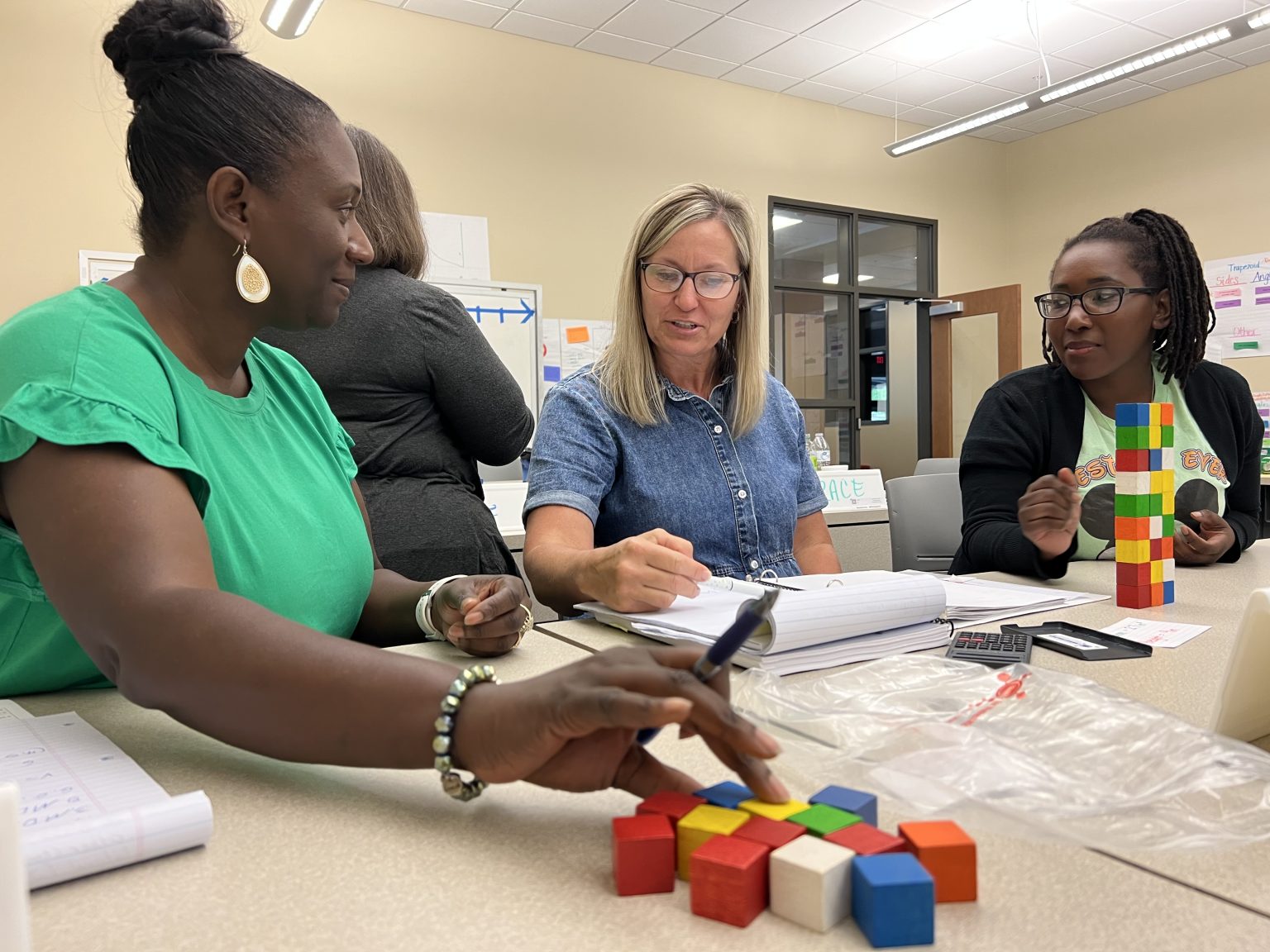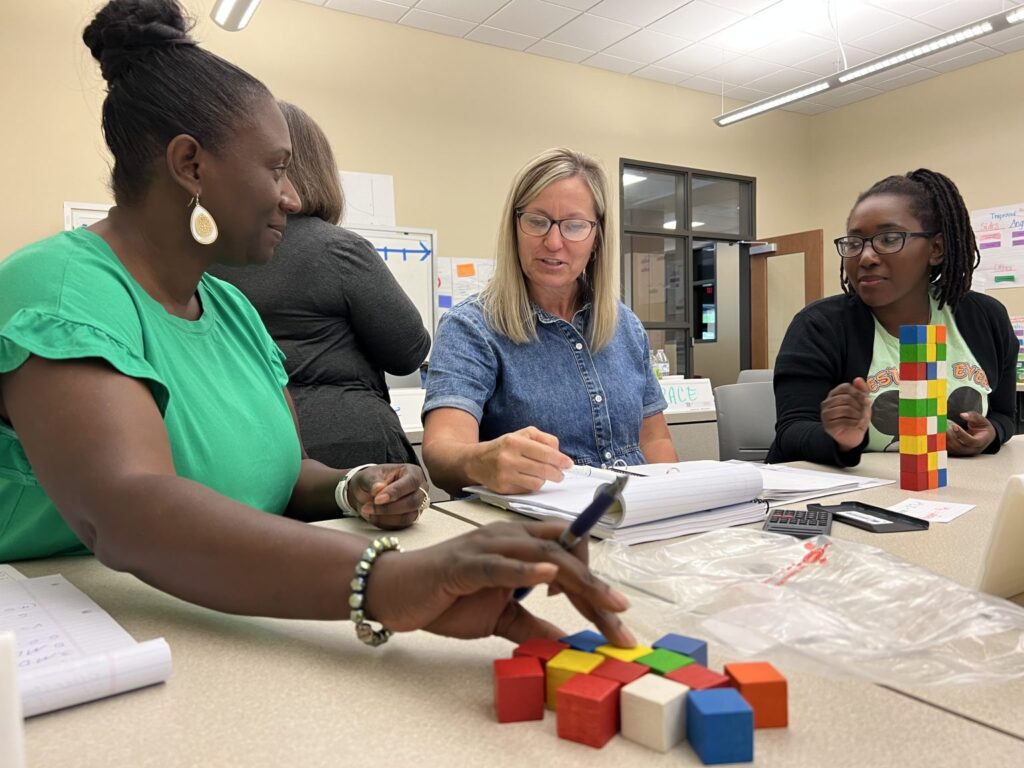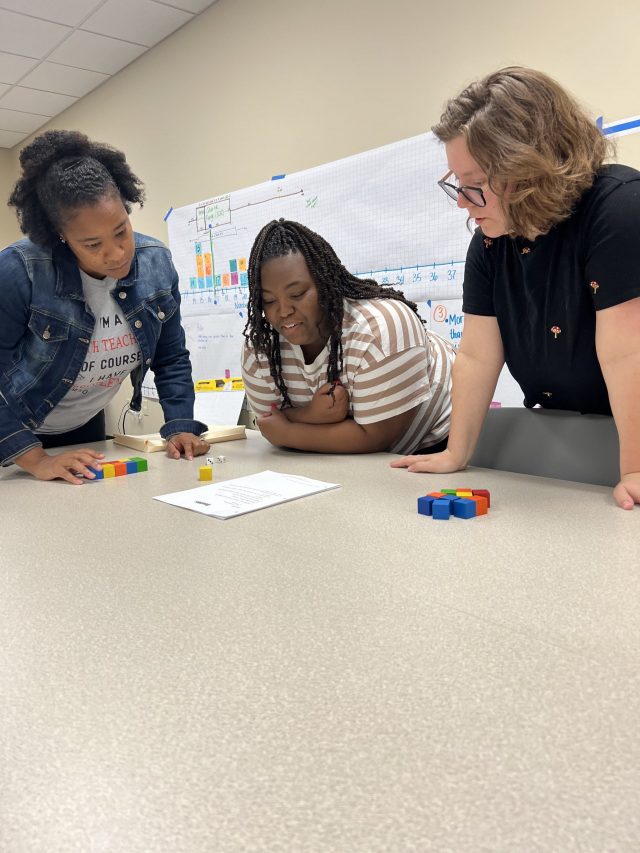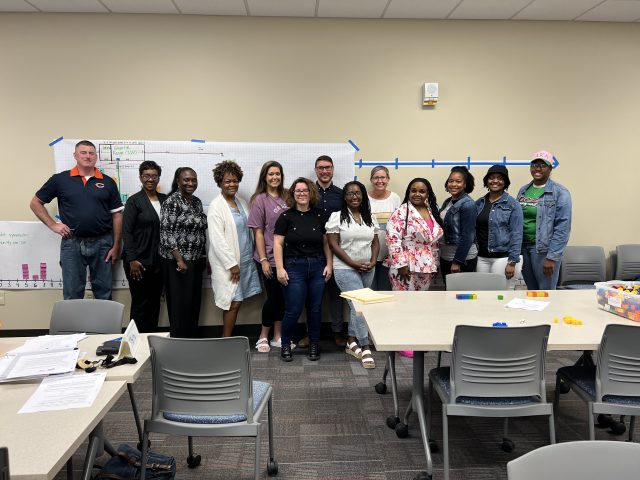
The Center’s Middle Math Institutes have helped more than 20 Mississippi teachers earn a 901 Endorsement
This summer, 15 Mississippi teachers will be ready to help address a critical teacher shortage in the state after completing the Middle Math Institutes at the Center for Mathematics and Science Education.
Created in 2021, the institutes serve a crucial role in minimizing the number of middle school math teacher vacancies in Mississippi by familiarizing licensed teachers who are already invested in a community with math content taught in grades 6-8.
Ninety-four of Mississippi’s 137 school districts experienced a critical teacher shortage in the 2022-2023 school year. The state’s STEM teacher shortage is so severe that it made headlines in The Washington Post earlier this year.
Of all subject areas, middle school math saw 123 vacancies, the highest number of middle school teacher vacancies in the state, according to the Mississippi Department of Education.
“Recruiting teachers to serve temporarily in rural and high-need areas has not proven to be a particularly sustainable approach to our teacher shortage,” said Julie James, assistant director of professional learning for CMSE. “It made us think, why not go straight to the source and offer teachers who are already connected to their rural communities a pathway to obtain mathematics content knowledge and credentials?”
Of the 23 teachers who have completed the institute’s training, 20 teach in a critical shortage area.
This year’s sizeable cohort suggests a growing interest in the program that saw four participants earn endorsement in its first year.
There are only two other paths to a middle school math endorsement: earning a passing score on the Middle Level Math Praxis Exam or taking 18 hours of college-level math courses. The Middle Math Institutes are the only approved professional development program leading to a supplemental endorsement.
The institutes offer more than an understanding of middle school math. Teachers also learn to engage students in the learning process and help students make connections to their previously learned math skills.
“What this program allowed me to do that the Praxis did not is to tackle the process instead of heading straight to the answer,” said Batesville Junior High teacher Harley Purdy.
“If you’re preparing for the praxis, you’re probably just memorizing formulas. It’s very easy to follow formula steps without understanding why you’re doing what you’re doing.”
Participants engaged in interactive, tactile and kinesthetic methods of problem solving. Throughout the four-week program they walked along number lines, scooped up cubes and papered the walls with life-sized bell curves.
“The program gets at the why behind formulas and gets everyone involved,” said Tunica Middle School teacher Chanté Bonds. It made things click in a new way. I’m excited to take these methods back to my kids.”
The CMSE established the Middle Math Institutes to fill the gap left by the discontinuation of the Math Science Partnership projects. In 2018, grant funds that had once been appropriated through No Child Left Behind federal legislation became unavailable and the development programs in middle level math and science were shuttered.
The program comprises four separate “content institutes”:
- number systems, ratios and proportions;
- expressions, equations and functions;
- geometry; and
- statistics and probability.
The institutes are designed with accessibilty in mind. Lessons are offered in both in-person and virtual formats, and teachers may complete institutes in any order through either format.
One online institute is offered each semester, and an immersion-style experience is offered throughout the month of June at the UM campus.
Learn more about Middle Math Institute course offerings and schedules here.
By Leslie Joblin






